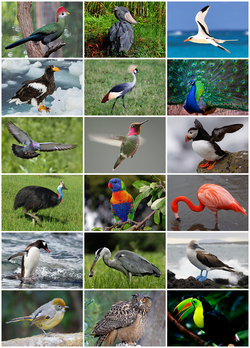males (facultative parthenogenesis), but recent research has revealed that this ability is widespread among squamates. Parthenogenesis can result from either...
23 KB (2,749 words) - 13:03, 9 June 2025
Reptile (redirect from Vision in reptiles)
Viviparity and ovoviviparity have evolved in squamates and many extinct clades of reptiles. Among squamates, many species, including all boas and most...
139 KB (14,906 words) - 19:43, 5 July 2025
turtles that have a single genital tubercle, as squamates have paired, separate genitalia. Squamate hemipenes also develop from a different cell origin...
20 KB (2,447 words) - 20:35, 25 May 2025
Parthenogenesis has been described in snakes and lizards (see Wikipedia Parthenogenesis in squamates), in amphibians (see Wikipedia Parthenogenesis in...
40 KB (4,308 words) - 15:58, 12 July 2025
Snake (category Articles with text in Germanic languages)
Serpentes (/sɜːrˈpɛntiːz/). Cladistically squamates, snakes are ectothermic, amniote vertebrates covered in overlapping scales much like other members...
152 KB (15,034 words) - 19:57, 14 July 2025
estimates made by Wroe et al. in 2009, making it easily the largest terrestrial squamate ever. Among all the squamates, this size is only known to be...
18 KB (1,901 words) - 18:01, 28 June 2025
Komodo dragon (category Vertebrate parthenogenesis)
2008, the Sedgwick County Zoo in Wichita, Kansas, became the first zoo in the Americas to document parthenogenesis in Komodo dragons. The zoo has two...
76 KB (8,641 words) - 05:56, 12 July 2025
Teiidae (section Parthenogenesis)
reproduce by obligate parthenogenesis (obligate, because the lizards do not involve males and cannot reproduce sexually). Like all squamate obligate parthenogenetic...
11 KB (1,090 words) - 08:13, 24 June 2025
Lizard (redirect from Lizards in captivity)
closely related to squamates than rhynchocephalians are. The oldest undisputed lizards date to the Middle Jurassic, from remains found In Europe, Asia and...
70 KB (6,750 words) - 08:30, 29 June 2025
Sexual reproduction (redirect from Sexual reproduction in animals)
reproduction has been identified in squamates in six families of lizards and one snake. In some species of squamates, a population of females is able...
42 KB (5,181 words) - 15:32, 30 June 2025
the most common in Eunectes, E. murinus has been observed to undergo facultative parthenogenesis. In both cases, the females had lived in isolation from...
27 KB (2,585 words) - 06:49, 3 July 2025
Agkistrodon piscivorus (category Reptiles described in 1789)
consume fish, whereas adult females mainly consume other squamates, in particularly snakes. In this same research, it was concluded that the prey size...
66 KB (7,715 words) - 01:10, 14 July 2025
Green anaconda (category Reptiles described in 1758)
anaconda in West Midland Safari Park gave birth to three young through parthenogenesis. Green anacondas in the wild live for about 10 years. In captivity...
44 KB (4,408 words) - 20:21, 15 June 2025
with rapid tongue flicking in the female. Obligate parthenogenesis as a reproductive system has evolved multiple times in the family Gekkonidae. It has...
48 KB (5,045 words) - 12:44, 30 June 2025
Burton's legless lizard (category Reptiles described in 1835)
reproduce through parthenogenesis which does not require mating to be successful. Hatchlings are approximately 13 centimetres long. In Australia a license...
17 KB (1,997 words) - 00:19, 3 July 2024
Bird (redirect from Birds in folklore)
While rare, mostly abortive, parthenogenesis is not unknown in birds and eggs can be diploid, automictic and results in male offspring. Birds are solely...
225 KB (23,633 words) - 07:41, 30 June 2025
















